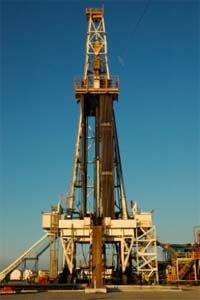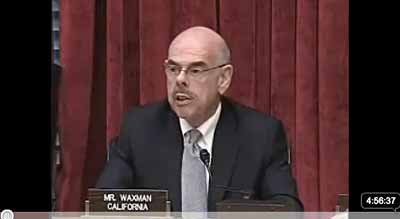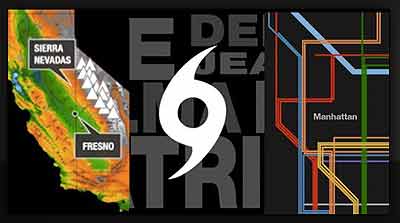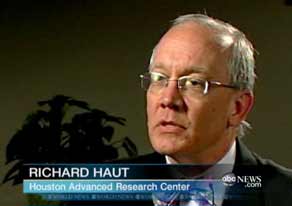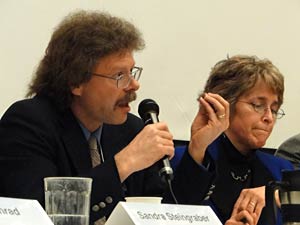Biblio
WASHINGTON — As the players here remake the nation’s vast regulatory system, they have been grappling with a subject that is more the province of poets and philosophers than bureaucrats: what is the value of a human life?
The answer determines how much spending the government should require to prevent a single death.
To protests from business and praise from unions, environmentalists and consumer groups, one agency after another has ratcheted up the price of life, justifying tougher — and more costly — standards...
...The Environmental Protection Agency set the value of a life at $9.1 million last year in proposing tighter restrictions on air pollution. The agency used numbers as low as $6.8 million during the George W. Bush administration.
The Food and Drug Administration declared that life was worth $7.9 million last year, up from $5 million in 2008, in proposing warning labels on cigarette packages featuring images of cancer victims.
The Transportation Department has used values of around $6 million to justify recent decisions to impose regulations that the Bush administration had rejected as too expensive, like requiring stronger roofs on cars.
See: Climate Co-benefits and Child Mortality Wedges | Fracking Resource Guide.
What is the value of a human life? Climate change is going to kill millions of children, does it matter that they're not yours?
See also: Associated Press. "How to value life? EPA devalues its estimate: $900,000 taken off in what critics say is way to weaken pollution rules." 2008-07-10.

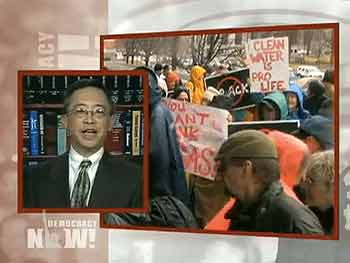
Efforts by lawmakers and regulators to force the federal government to better police the natural gas drilling process known as hydraulic fracturing, or "fracking," have been thwarted for the past 25 years, according to an exposé in the New York Times.
Studies by scientists at the U.S. Environmental Protection Agency on fracking have been repeatedly narrowed in scope by superiors, and important findings have been removed under pressure from the industry.
The news comes as the EPA is conducting a broad study of the risks of natural gas drilling with preliminary results scheduled to be delivered next year.
Joining us is Walter Hang, president of Toxics Targeting, a firm that tracks environmental spills and releases across the country, based in Ithaca, New York, where fracking is currently taking place. [includes rush transcript]

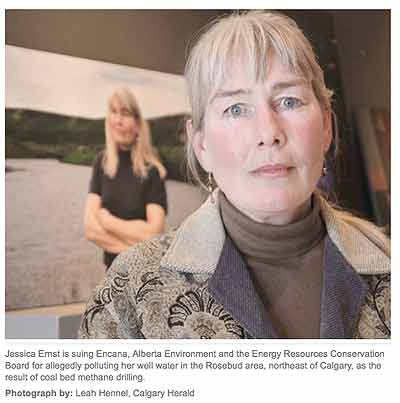
The lawyer leading a $33-million lawsuit against Encana, the Alberta government and the province’s energy regulator says the case speaks to broader environmental concerns across North America about fracking.
“It’s very much the same issues all over,” said Murray Klippenstein, a Toronto-based litigator.
Klippenstein is representing landowner Jessica Ernst, who has long argued that coal bed methane drilling around her Rosebud-area home northeast of Calgary has resulted in the pollution of her well water.
“The hydraulic fracturing issues that Jessica raises in her lawsuit are coming up more and more publicly, with more and more concerns, not only in Alberta, but in B.C. and Quebec, and all over the United States,” he said.
A lawsuit filed in Drumheller last week alleges Encana, Alberta Environment and the Energy Resources Conservation Board are all responsible for damages. She claims the natural gas giant for faulty drilling practices, and the government and board for failing to properly investigate or enforce the province’s environmental rules.
Ernst is demanding more than $10 million from each.
See: New Lawsuit Filed in Fracking Country
See: Pennsylvania lawsuit says drilling polluted water
See: Affirming Gasland
See: Breaking news: EPA vetoes Spruce Mine permit
See: WATER: Rulings Restrict Clean Water Act, Foiling E.P.A.
Organization web site features a widget that shows how you are connected to mountaintop removal where you live.
You Can End Mountaintop Removal.
Mountaintop removal is a radical form of coal mining in which entire mountains are literally blown up -- and it is happening here in America on a scale that is almost unimaginable.
Please take a moment to learn more about mountaintop removal mining -- and then join us by taking action to stop it.
See: Welcome to Rogers Neighborhood | House Passes Dangerous Budget in the Dark of Night
See: GOP Budget Amendments Would Destroy Health, Economy, Planet.
See: Michael Cusack O'Connell. (film). Mountaintop Removal.
Hydraulic fracturing, more commonly known as hydrofracking, is the process of extracting natural gas from underground rock formations. And, it’s increasingly becoming a topic for debate in New York State. Where do New Yorkers stand on the issue?
Click Here for Complete May 17, 2011 NYS NY1/YNN-Marist Poll Release and Tables
No Consensus

Photo by Neil Zusman
According to this NY1/YNN-Marist Poll, New Yorkers divide on the issue. 41% oppose hydrofracking while 38% support it. A notable 21% are unsure. Similar proportions of registered voters statewide share these views.
Regionally, there’s no majority on either side of the ledger. 47% of those upstate are against hydrofracking while 37% support it. 39% in New York City oppose the process while 35% favor it. However, in the suburbs of New York City, 46% are for hydrofracking while 36% are against it.
There are partisan differences on this question. While pluralities of Democrats — 47% — and non-enrolled voters — 46% — oppose the process, nearly half of Republicans — 49%– support it.
“Many New Yorkers have yet to weigh in on this issue,” says Dr. Lee M. Miringoff, Director of The Marist College Institute for Public Opinion. ”The question is what will happen to the public’s opinion about hydrofracking as both sides make their case.”
See:Table: Support for Hydrofracking in NYS
See: Environmental Advocates New York
See: Action Center | Republicans for Environmental Protection (REP America)
See: New York State Assembly Passes Moratorium on Hydrofracking | Governor Vetoes Bill
See: Regulation Is Lax for Water From Gas Wells
See: Catskill Citizens | More Damning Evidence About Fracking
Read the report, Protecting New York’s Air, Land, Water and People: What’s the Hydro-Fracking Rush? (PDF 3.1 MB)
Read Deep Pockets, Deep Drilling, published by Common Cause, July 2010 (PDF)
Read "Affirming Gasland" (PDF) from Damascus Citizens
Supporting materials and other information
County and Town Hydro-Fracking Resolutions
NYS Bills on Environmental Effects of Fracking
Comments submitted by governments, agencies, and organizations on New York’s proposal to permit Hydro-fracking for natural gas extraction in the Marcellus and Utica shale formations.
Photos and related videos of our Hydro-Fracking Day of Action
See this 92 page report criticizing the 2009 New York State DSGEIS:
Myers, Tom. Review and Analysis of DRAFT Supplemental Generic Environmental Impact Statement On The Oil, Gas and Solution Mining Regulatory Program Well Permit Issuance for Horizontal Drilling and High-Volume Hydraulic Fracturing to Develop the Marcellus Shale and Other Low-Permeability Gas Reservoirs. Technical Memorandum. Citizens Campaign for the Environment. New York NY: Natural Resources Defense Council, December 28, 2009. (92 pages).
Today, Republicans in the House energy committee voted not once, not twice, but three times [all PDFs], against amendments recognizing that climate change is real, despite the broad scientific consensus that "climate change is happening and human beings are a major reason for it." They then unanimously voted [PDF] in favor of the Upton-Inhofe bill to repeal the EPA's scientific endangerment finding on greenhouse pollution.
The 31 Republicans and three Democrats who voted in favor of H.R. 910 have received a grand total of $343,750 from Koch Industries, an average of more than $10,000 each. Freshman Mike Pompeo (R-Kan.), Koch's special man in Congress, tips the scales at $79,500.
But today's vote is not the first time the Commitee From Koch went public on their science denial.
[Following is] a survey of the members of the committee, fueled by support from Koch Industries and other polluters, and their proclaimed opposition to climate science and climate scientists...
See for yourself. Chairman Upton, Rep. Barton, Rep. Waxman, et al. "Full Committee Markup on "H.R. 910" and "H.J. Res. 37" (Continued)". YouTube. (Running Time - 4:56:37).
See: Comments from Committe on Energy and Commerce Democrats:
Letter in Opposition from Scientists: "The EPA must be allowed to fulfill its responsibilities and take action to regulate global warming emissions under the Clean Air Act. This science-based law has prevented 400,000 premature deaths and hundreds of millions of cases of respiratory and cardiovascular disease during the 40 years since it was first passed5—all without diminishing economic growth."
Letter in Opposition from National Academy of Sciences: "We are deeply disturbed by the recent escalation of political assaults on scientists in general and on climate scientists in particular. All citizens should understand some basic scientific facts."
Letter in Opposition from Former Senior Military Officers: "America’s dependence on oil constitutes a clear and present danger to the security and welfare of the United States. As former senior military officers, we are concerned about Congressional efforts to undermine the Environmental Protection Agency’s regulatory authority that is critical to reducing our dependence on oil."
Letter in Opposition from Health and Medical Professionals: "Please fulfill the promise of clean, healthy air for all Americans to breathe. Support full implementation of the Clean Air Act and resist any efforts to weaken, delay or block progress toward a healthier future for all Americans."
Letter in Opposition from the American Public Health Association: "Cimate change is a public health issue and is one of the greatest threats to human health. Scientists from across the globe have stated in the strongest possible terms that the climate is changing and that human activity is to blame."
Letter in Opposition from Organizations: "This reckless legislation puts America’s health, prosperity, and national security at risk by gutting the Clean Air Act, overturning a decision of the Supreme Court, and dismantling the Environmental Protection Agency’s ability to address life-threatening carbon dioxide and other pollution."
Letter in Opposition from Health Organizations: "This legislation would block the EPA from setting sensible safeguards to protect public health from the effects of air pollution."
Letter in Opposition from the American Lung Association: "A recent bipartisan survey... indicates the overwhelming view of voters: 69 percent think the EPA should update Clean Air Act standards with stricter limits on air pollution; 64 percent feel that Congress should not stop the EPA from updating carbon dioxide emission standards; 69 percent believe that EPA scientists, rather than Congress, should set pollution standards."
See: Broder, John M. 2011. House Panel Votes to Strip E.P.A. of Power to Regulate Greenhouse Gases. The New York Times, March 10, sec. Science / Environment.
See: Reeve, Elspeth. 2011. House Energy Panel Curbs Federal Power to Fight Climate Change - Politics - The Atlantic Wire. The Atlantic Wire. March 16.
See: EPA chief faces hostile House GOP
See: Smackdown: climate science vs. climate economics.
See: Climate Co-benefits and Child Mortality Wedges.
See: Snubbing Skeptics Threatens to Intensify Climate War,
See: Climate Zombies Now Run The House.
See: GOP Budget Amendments Would Destroy Health, Economy, Planet
See: EPA chief faces hostile House GOP
See: Energy & Commerce Committee Investigates Potential Impacts of Hydraulic Fracturing
For one of the more articulate conservative bloggers viewpoints on climate change and its' hermeneutics, read Alberta, Canada's Kevin Libin at ClimateRealists and The National Post.
See: Libin, Kevin. 2011. "Kevin Libin: Environmental activists hide behind a screen of U.S. money." National Post.
For an embarassing account of the dangers of environmentalism, see: Beware The Green Dragon! | Right Wing Watch.
Plaintiffs in Connecticut v. American Electric Power allege that six utilities' emissions are a public nuisance.
U.S. Supreme Court Monthly Argument Calendar. Tuesday, April 19, 2011. 10-174. AMERICAN ELECTRIC POWER CO. V. CONNECTICUT.
See: SCOTUS (Supreme Court of the United States) Blog.
In the seemingly endless climate change debate, the regulation of greenhouse gases (GHGs) is a contentious issue among scientists, advocacy groups, lawmakers and businesses. Opinions are strong and varied as to how GHG emissions affect the environment and to what extent they should be controlled.
In 2004, a group comprising eight states, New York City and three non-profits sued six GHG-emitting electric power corporations—American Electric Power Company, American Electric Power Service Corporation, Cinergy Corporation, Southern Company, Tennessee Valley Authority and XCEL Energy—for allegedly contributing to global warming. The plaintiffs in Connecticut v. American Electric Power claimed the utilities’ carbon dioxide (CO2) emissions were a public nuisance causing an array of environmental and personal injuries, including smog-induced respiratory problems; deaths related to prolonged heat waves; property-damaging floods; a decrease in mountain snowpack, a key water source for California; beach erosion from rising sea levels; and loss of biodiversity.
Arguing the utilities’ CO2 emissions constitute 10 percent of the U.S.’s total CO2 emissions, the plaintiffs sought injunctive relief that would hold the defendants jointly and severally liable for causing a public nuisance, cap the utilities’ emissions and require them to reduce emissions by a certain percentage annually for at least 10 years.
A trial court dismissed Connecticut v. AEP, saying it presented political questions that "are not the proper domain of judges" and that the "scope and magnitude of the relief Plaintiffs seek reveals the transcendently legislative nature of this litigation."
But on appeal, the 2nd Circuit allowed the plaintiffs’ nuisance claims to proceed. When the appeals court denied the defendants’ petition for en banc review, the utilities filed a petition for certiorari, which the Supreme Court granted on Dec. 6, 2010.
"This case had to come to the high court," says Patrick Raher, a partner in Hogan Lovells’ environmental group. The Supreme Court must make it clear that the legal system has no business creating CO2 policies, he says.
See: New climate change case headed to Supreme Court. AP. April 18, 2011.
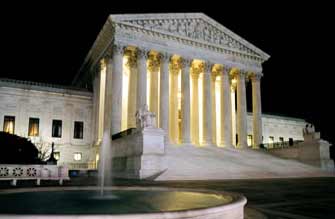 Proceedings and Orders | American Electric Power Company Inc., et al., Petitioners v. Connecticut, et al. August 4, 2010.
Proceedings and Orders | American Electric Power Company Inc., et al., Petitioners v. Connecticut, et al. August 4, 2010.
The Obama administration, in a recently filed brief in the Connecticut case, American Electric Power v. Connecticut, is arguing that it may not be prudent for the high court to allow these types of cases to go forward. (Coyle, 2010)
"If the plaintiffs can tag utilities for CO2 liability, the damages are potentially staggering," says McCarter & English Partner Wylie Donald, co-chair of the firm’s Climate Change and Renewable Energy Practice.
Allen Kacenjar, a principal in Squire Sanders’ Global Climate Change Practice, says Connecticut v. AEP has serious implications for companies with GHG-emitting facilities. "What’s at stake is whether the federal courts will basically become a clearinghouse for climate change tort actions," he says.
The Supreme Court will hear arguments on April 19, and justices will then attempt to answer the case’s crucial question: Can courts regulate GHG emissions in the absence of comprehensive climate change legislation?
See: Google Scholar Search on this case.
In 2009, the U.S. Court of Appeals for the Second Circuit upheld the states’ right to bring this lawsuit. The power companies appealed the case to the Supreme Court, which will hear arguments on April 19, and is expected to decide the case by July.
Attorney General Schneiderman is vigorously defending the appeals court’s ruling to protect New Yorkers from the harms caused by climate change. These harms include causing asthma and other respiratory diseases, eroding beaches and inundating properties on Long Island, increasing heat-related deaths in New York City, lowering water levels in the Great Lakes that harm the shipping industry, and killing off hardwood forests in the Adirondacks.
See: New York State Office of the Attorney General. "A.G. Schneiderman Urges U.S. Supreme Court to Uphold States' Rights to Sue Carbon Dioxide Polluters." New York State Office of the Attorney General. March 14, 2011.
See: A copy of the Attorney General's Brief 10-174. Filed March 2011.
See: New York State Office of the Attorney General: Media Center. "Schneiderman to Feds: Commit to Study Safety Impacts of "Fracking" in Delaware River Basin in 30 days or I'll Sue." 2011-04-18.
See also: Pew Center on Global Climate Change. “Massachusetts et al. v. EPA et al..” Pew Center on Global Climate Change 2 Apr. 2007. Web. 4 Apr. 2011.
Supreme Court Decision in Massachusetts et al vs. Environmental Protection Agency
On April 2, 2007 the Supreme Court released its ruling in the case of the state of Massachusetts vs. the Environmental Protection Agency. Massachusetts and eleven other states, along with several local governments and non-governmental organizations (petitioners), sued the EPA for not regulating the emissions of four greenhouse gases, including carbon dioxide (CO2), from the transportation sector. The petitioners claimed that human-influenced global climate change was causing adverse effects, such as sea-level rise, to the state of Massachusetts. In a 5-4 decision, the court ruled in favor of Massachusetts et al, finding that EPA has the authority to regulate CO2 and other greenhouse gases.
The decision was written by Justice Stevens and was signed by Justices Kennedy, Souter, Bader Ginsburg, and Breyer. Chief Justice Roberts and Justices Alito, Scalia, and Thomas dissented.
See: Coyle, Marcia. “High court could melt climate-change cases.” The National Law Journal | Law.com 13 Sept. 2010. Web. 13 Apr. 2011.
See also: LaMonica, Martin. "Supreme Court rules EPA can regulate greenhouse gases". 2007-04-02. CNET News. Web. 11 Apr. 2011.
See also: Broder, John M. "Keep Courts Out of Climate Policy, G.O.P. Lawmakers Say." 2011-02-08. NYT Green. Web. 11 Apr. 2011.
Joshua Tauberer is the “grandfather” of the open-data movement for the U.S. Congress and a “data crusader”.
GovTrack.us, launched in 2004, was the first website to apply the principles of open data and Web 2.0 to the U.S. Congress. It catalyzed the development of a community of like-minded developers and shaped the data-oriented open government movement that we see today.
See: Marshall Kirkpatrick. "Data Hacker Pageranks Members of the US Congress." ReadWriteWeb. Dec. 27, 2010.
See: Dirty Energy Money.
Of the over 400 amendments offered on the House government-funding measure, the 2011 Continuing Resolution (H.R. 1), dozens are focused on climate change, energy policy, and environmental protection. The existing language in the budget bill is already designed to deny global warming, slash and burn public health and green jobs, but the amendments would take even more radical steps to reward polluters who are killing our children’s future. Republican amendments, if fully enacted, would:
– Eliminate the White House Council on Environmental Quality, the Special Envoy for Climate Change, the Assistant to the President for Energy and Climate Change, the NOAA Climate Service, the Department of Energy’s ARPA-E, National Science Foundation K-12 funding
– Block US funding for the Intergovernmental Panel on Climate Change and the Global Environment Facility
– Suspend enforcement of fisheries laws and construction and conservation acquisition programs of the National Parks and Department of the Interior
– Block rules for cement plant pollution, coal ash, industrial boiler pollution, water quality, climate change pollution, climate change adaptation, energy-efficient lighting, mountaintop removal, atrazine, and water conservation.
"Most of these amendments are budget neutral, not lowering the deficit one cent. Several defund extremely effective jobs programs that cost only a few million dollars. The goal of these amendments is not fiscal responsibility or jobs creation, but polluter protection, even though the pollution is poisoning babies, causing the elderly to suffer, and destroying America’s natural bounty.
Max Shelby | Vincent Alabama said, find how your representative voted and give 'em hell!
These were revenue-neutral amendments, meaning they weren’t aimed at reducing the federal budget deficit, but were designed solely to prevent the EPA and other government agencies from updating and enforcing clean air and clean water laws. In short, it was Christmas for polluters.
Profile
Brad Johnson is a climate researcher-blogger at the Center for American Progress Action Fund. He blogs at the ThinkProgress Wonk Room on the climate crisis, energy policy and building a green economy.
See: A Life’s Value May Depend on the Agency, but It’s Rising
Why don't Congressional climate change zombies see that climate change is a national security issue?
This website is a well-designed student journalism project that includes stories, interactive features, video, and links to documents.
According to a recent New York Times series, leaked EPA documents have exposed a decades-old effort to hide the dangers of natural gas extraction.
Nevertheless it's going full tilt without the scientific, objective regulation, and analysis that important security issues warrant, even though industry experts have known about the many risks it poses to the environment and our health for years. (Neil Zusman, 2011-03-11).
National Security Journalism Initiative
The Medill School of Journalism, a national leader in journalism education for decades, is now with the assistance of a generous McCormick Foundation grant expanding that leadership role into building a specialty, or a sequence of courses, into areas of national security journalism education.
See: A Life’s Value May Depend on the Agency, but It’s Rising
"Our quality of life has an unquenchable thirst for energy. Offshore drilling and production helps to satisfy this thirst." --Richard Haut
Extracting energy requires trade-offs. “We want clean air, but we also like the convenience of electricity,” said Richard Haut during a lunch-hour seminar last Tuesday. Haut, founder and senior research scientist at Houston Advanced Research Center (HARC), visited Cornell to promote what he calls “environ- mentally friendly drilling systems.”
But his talk left many people hungry for answers...
Haut embraces the idea that drilling is coming and the only question is how to minimize the damage. Take hydraulic fracturing: about 50 percent of all wells drilled into shale, tight gas and coal-bed methane formations use fracking. Within 25 years, he said, 75 percent of all gas wells will be fracked.
“But the typical frack site is an accident waiting to happen,” Haut said, pointing out potential spills, pit leaks and heavy truck traffic. Another issue is dealing with flow- back and produced waste fluids. Haut showed examples of mobile treatment units but never described the technology under development...
The problem with Haut’s environmentally friendly drilling approach, says Cornell engineering professor Tony Ingraffea, is that it reflects the worldview that shale gas development is inevitable, so we just have to “do it right.” This precludes true scientific investigation of many issues that this development presents, he said, noting that instead it focused on technology, such as how to build a well less likely to leak. “Such a view is also an admission that the thousands of shale gas wells already made, and those underway now, are not ‘being done right’,” Ingraffea said.
Physicist Bill Podulka agrees.
“The wide array of acknowledged problems and lack of currently available solutions underscores what many gas drilling critics have been saying: this technology is not ready.” What was missing, Podulka says, is discussion about excluding drilling from areas too socially or environmentally fragile. Instead, he said, the context boiled down to “how do we allow business as usual while bringing environmental damage down to a level we can tolerate?”
See: Gasland - The Debate
Playing Dirty
If you have not seen Gasland, take some time to watch it. You can view it on HBO, or purchase from Amazon. The trailer can be seen here: Gasland Trailer.
Now this movie has made its way to the Oscars and as exciting as that is, the Natural Gas Industry is now in full attack form doing whatever it takes to tear this nomination apart.
This works because people that see this movie are touched. They are touched because they have been directly affected by hydraulic fracturing or they want to be a voice for those that have been and don’t want to become a silent statistic as well.
Energy In Depth, a group sponsored by a coalition of natural gas companies, sent a letter to the Academy asking that Gasland — a film about a controversial mining technique called hydro-fracking — be removed from the Documentary Feature category.
It is a good thing that they are reacting so publicly, as they are bringing far more attention to the film and the issue at hand. Josh issued an open letter to the media today, responding to the natural gas industries attempt to slam Gasland. You can read Josh’s letter here on in our Facebook Notes “An Open Letter from Josh Fox.”
Join our communities on Twitter & Facebook and become apart of this conversation, it is one of the most important that you will have.
Azita Ardakani {Founder of Lovesocial}
Edit-Neil Zusman, 2011-02-10
See: Energy in Depth | Mixplex
See: Gasland - The Debate
William M. Foster / Auburn AuburnPub.com | Posted: Tuesday, May 17, 2011 3:00 am | (4) Comments
“Call your legislators today and say ‘absolutely not.’ No toxic dump wells in the Finger Lakes!”
William M. Foster
Auburn
Whether you are for it or against it, hydrofracking will significantly alter our way of life, and it’s possible that Gov. Andrew Cuomo will make the decision to the end the current moratorium on June 1. Write or phone — tell him no.
The state Department of Environmental Conservation estimates that natural gas drilling companies will drill 71,000 wells along the southern border of the state from Binghamton to Buffalo and up into the Finger Lakes. To frack one well, it takes on average 4 million gallons of water and 250,000 pounds of chemicals. Each well will be fracked on average six times, which in essence means 24 million gallons of water and 1.5 million pounds of chemicals. When you multiply that by 71,000 wells, the numbers are staggering.
Compounding the issue, gas drilling companies are not required to disclose what they use in the fracking fluids nor are they required to follow any of the federal environmental laws put in place to protect public health and our drinking water.
In Pennsylvania, where hydrofracking is in full swing, state regulators have issued more than 1,400 serious violations in the past two years, including contamination of drinking water and chemical spills.
There’s no reason to doubt the same problems will occur here. Are we expecting our first responders to show up to well blowouts and truck accidents without full knowledge of the hazardous materials involved?
We should all be aware that these companies will be trying to site 10,000 feet deep injection wells to “dump” their toxic waste in just as they have done in other states. It’s too expensive for them to do it any other way. We subsidize them by getting to keep their toxic waste.
Call your legislators today and say “absolutely not.” No toxic dump wells in the Finger Lakes!
Call your state and local legislators and tell them to stop this from happening — now.
In closing, I have used the DEC SGEIS report on hydrofracking as a guide. My family has lived in this community for more than 100 years but I’m not sure that living here with these changes is possible.
William M. Foster
Auburn
Foster is a former member of the Auburn City Council
See: Natural Gas Firms Cited for "Significant Non-Compliance With Auburn Sewer Use Law".
Update
See: Christopher Caskey. "Rally planned against gas well water in Auburn." The Citizen. 2011-05-26.
See: Scott Rapp. "Auburn group hopes protest sways city to stop taking wastewater from natural gas drilling." The Post-Standard. 2011-05-29.
See: Editorial. "Our View: Moratorium, study needed on wastewater." The Citizen. 2011-05-29.
Update on Event:
...More than 125 activists gathered from all over New York. We heard many moving speakers, including, but not limited to: Sandra Steingraber, Bob Boyle, Wes Gillingham, Legislative Representatives Barbara Lifton, Donna Lupardo, Liz Krueger, Brian Kavanagh, Danny O'Donnell, Michelle Schimel, Deborah Glick, Aileen Gunther and Tom Abinati as well as Catherine Hughes and Gene Stilp, an emissary from Pennsylvania's beleaguered gas fields, among notable others.
After the Rally, the crowd snaked from the "Well" in the Legislative Office Building all the way to the Capitol next to the Hall of Governors where Governor Cuomo's office is located. As we ascended the staircase, our chant of "NO FRACKING WAY" began to reverberate off the stone walls.
By prior agreement with highly accommodating New York State Troopers, the crowd gathered in the beautiful and historic War Room. The high-volume chant went on and on and on for nearly an hour, maybe longer. The floor in the War Room was shaking. People, including at least one minister, were dancing and banging on anything that could make noise. It was totally unbelievable. Albany was buzzing today at the performance of the "leather lung choir!!!" Rock on.
Check out "War Room protest: ‘No fracking way’" a video posted by the Albany Times Union. It will knock you on your butt.
See also: Nancy Hickling. "Local Protesters Travel To Albany To Rally Against Hydrofracking." WBNG News. 2011-03-24.
See also: Erin Connolly. "Rally to expand hydrofracking impact study." TWEAN news channel of Albany: Capital Region YNN. 2011-03-25.
...Commissioner Martens acknowledged that we had presented new data that had not been incorporated into the woefully deficient originally draft SGEIS or the Executive Order proceeding. He was entirely gracious and said he was still in the process of being briefed about the many aspects of revising the Draft SGEIS per Executive Order No. 41. He said no decision would be made in our meeting about allowing public comment regarding how DEC should go about revising the Draft SGEIS. He offered to meet again with the group.
Original Report. 2011-03-22
We are Full Steam Ahead for a Noon Rally this Thursday, March 24, 2011 at the New York State Capitol (West Capitol Park, Swan Street Steps) requesting Governor Andrew M. Cuomo to expand the scope of the Marcellus Shale draft Supplemental Generic Environmental Impact Statement (SGEIS).
Update
Neither rain nor snow nor sleet will keep us from our momentous Rally tomorrow in Albany to request Governor Cuomo to expand the scope of the Marcellus Shale draft SGEIS.
Since inclement weather is predicted, we are moving our Rally indoors. Please gather at 12:00 Noon in the "Well" of the Legislative Office Building. See map below. Just walk into the LOB from the Concourse of the Empire State Plaza. The Well is just past the elevators. You can't miss it.
This large cavernous space will showcase our event to Legislators, staff and lobbyists. It is ideal for our purposes. Thank you, Assemblywoman Lifton, for all your assistance on our behalf.
In addition to the highly notable individuals and groups I mentioned yesterday, we will be joined by Shaleshock, Committee to Protect the Finger Lakes, Cortland Drilling Awareness Coalition, Tompkins County Legislator Pam Mackesey and Catherine Hughes of New York City Community Board One, which passed a major resolution last evening in support of expanding the scope of the draft SGEIS.
I am pleased to let you know we will be joined by State Legislators, physicians concerned about gas drilling threats to public health, NYPIRG, NYRAD, Catskill Mountainkeeper, Sierra Club: Atlantic Chapter, acclaimed ecologist, Sandra Steingraber, and legendary environmental activist and author, Robert H. Boyle, who revealed GE's contaminated the Hudson River with PCBs (polychlorinated biphenyls).
Most importantly, grassroots activists and groups will be gathering at the Capitol from all over New York...
Thank you so much for your strong support.
See: New York State Assembly Passes Moratorium on Hydrofracking | Governor Vetoes Bill.
See: Leaked EPA Documents Expose Decades-Old Effort to Hide Dangers of Natural Gas Extraction.












